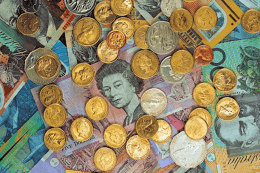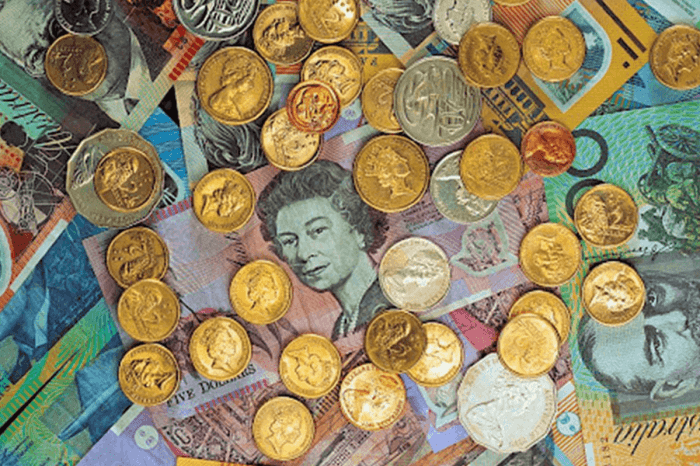
Australians continue to spend more on groceries this year but new research from Compare the Market shows signs that savvy shoppers are starting to claw back some savings, with the average spend falling $7 last month.
As of June 2025, the average Aussie spends $206.54 on groceries each week, equal to $10,740.08 annually.*
This is down 3.32% compared to the $213.64 per week they were spending in January 2025, but up nearly $15 from the 2024 weekly average of $191.66.**
Compare the Market’s Sarah Orr said many Australians have adjusted their spending habits to combat the rising cost of living.
“It’s not necessarily that prices are falling. Savvy shoppers have got better at looking for ways to stretch their money further,” Ms Orr said.
“A saving of $7.10 each week mightn’t sound like much, but it adds up to $369.20 a year which could have a big impact on a family budget.
“It’s almost enough to cover two average grocery shops a year. That’s money that could be put towards other big bills like energy or insurances. It might even help fund a weekend getaway.”
| Location | Weekly Spend groceries January 2024 | Weekly Spend groceries January 2025 | Weekly spend groceries June 2025 | Dollar difference Jan 2024 – June 2025 | Percentage difference Jan 2024 – June 2025 |
| National | $191.66 | $213.64 | $206.54 | +$14.88 | 7.76% |
| NSW | $195.94 | $212.90 | $213.07 | +$17.13 | 8.74% |
| QLD | $172.29 | $210.46 | $203.40 | +$31.11 | 18.05% |
| SA | $167.21 | $193.58 | $195.57 | +$28.36 | 16.96% |
| VIC | $199.25 | $216.85 | $195.14 | -$4.11 | -2.06% |
| WA | $178.17 | $214.21 | $218.87 | +$40.70 | 22.84% |
Source: Compare the Market survey of 1,005 Australian adults, conducted Jan 2024. Survey of 1,010 Australian adults, conducted Dec 2024. Survey of 1,013 Australian adults, conducted June 2025. NT, ACT and Tas included in national total.
Grocery spending habits varied across Australia, with spending increasing slightly in New South Wales, South Australia and Western Australia in the first half of the year, but decreasing in Queensland and Victoria.
Victoria is Australia’s most frugal state at the grocery store, with prices dipping by around 2.06% between 2024 and 2025.
Conversely, Western Australia has seen a $40 increase year-on-year, adding $2,116.40 in annual shopping costs compared to 2024. Western Australians spend $12.33 more than the national weekly average on groceries and the most of any Australian state surveyed.
Ms Orr said we’re not completely out of the woods when it comes to the cost-of-living crisis.
“We hear a lot of economists talking about how inflation is returning to the RBA’s target range, but the reality is groceries aren’t costing Australians less,” Ms Orr said. “Essentials like bread, milk and vegetables that we buy every week have a significant impact on our wallets.
“Australians have been hit with price hikes from every corner over the past few years. Now they’re fighting back by saying ‘no’ to expensive items and looking for better deals on the cheaper shelves. These smart tactics have helped many navigate the cost-of-living crisis.”
Ms Orr’s top tips to save on your grocery shop.
- Shop with a plan – A little research goes a long way before hitting the grocery store. Know where the specials are and even consider shopping across multiple stores to maximise your savings.
- Ditch the loyalty – Don’t stay loyal to supermarkets or brands with higher prices. Often, you’ll be able to find a similar product with a cheaper price tag by trying different brands. Don’t pay for the pretty packaging.
- Don’t let your eyes deceive you – Eye level is usually buy level, but focus on the unit price to know if you’re really getting your money’s worth. Big signs don’t always result in the biggest savings.
- Collect your freebies where you can – Always shop with your reward cards and be sure to “boost” ahead of a shop to maximise any points you can earn. But remember that boostable items aren’t usually the ones on special, so don’t get into the habit of spending more to earn points.
- Stretch the friendship – Check your energy provider, insurance company and other utility businesses, as you may be eligible for discounts and deals without even realising it. Every dollar counts.
* Survey of 1,013 Australian adults, conducted June 2025.
**Survey of 1,005 Australian adults, conducted Jan 2024. Survey of 1,010 Australian adults, conducted December 2024.
For more information, please contact:
Phillip Portman | 0437 384 471 | [email protected]
Compare the Market is a comparison service that takes the hard work out of shopping around. We make it Simples for Australians to quickly and easily compare and buy insurance, energy, and home loans products from a range of providers. Our easy-to-use comparison tool helps you look for a range of products that may suit your needs and benefit your back pocket.








